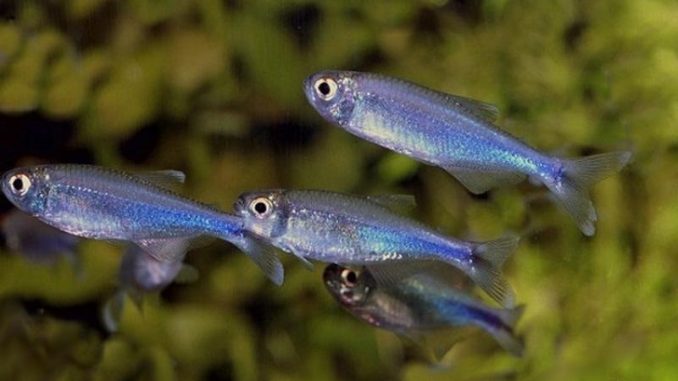
The blue tetra is a freshwater fish of the tetra family, native to the streams and rivers of Iquitos, Peru.
Blue tetras are a popular species among aquarists for their vibrant blue to bluish-green color, small size, lively temperament, easy care level, and ability to breed in the tank.
TABLE OF CONTENTS
Blue Tetra Facts & Overview
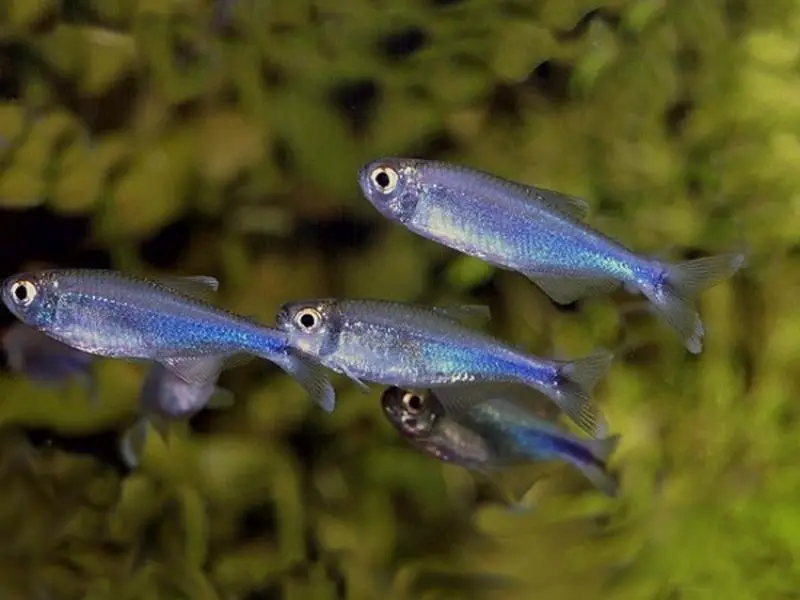
| Scientific name: | Knodus borki |
| Common names | Blue tetra |
| Distribution: | Peru |
| Size: | 2 inches |
| Life expectancy: | 2–4 years |
| Color: | Blue, blue-green |
| Diet: | Omnivore |
| Temperament: | Lively, slightly aggressive |
| Minimum tank size: | 20 gallons |
| Temperature: | 72–78°F (22–26°C) |
| pH: | 5.5–7 |
| Hardness: | 5–12 dGH |
| Care level: | Easy |
| Breeding: | No data |
Origin
The blue tetra is native to northeastern Peru, specifically the city of Iquitos, which borders Brazil and Colombia. These fish are usually found in rivers and streams that are filled with oxygenator plants.
The blue tetra was mistaken for another type of fish, the Cochu’s blue tetra (Boehlkea fredcochui) until it was correctly identified in 2008 by Axel Zarske as a different species entirely.
Zarske named the blue tetra, Knodus borki, in honor of the German aquarist Dieter Bork.
Adult Size & Lifespan
The blue tetra is a small-sized fish that can grow up to around two inches in length.
Though males and females are the same size, female blue tetras look larger at first glance because they are rounder or plumper than male blue tetras. If well taken care of, blue tetras can live for up to four years.
Availability
Blue tetras are one of the rarest of the tetra species. If you’re lucky, you may find blue tetras for sale, usually ranging in price from $11–$12. Your best bet may be to purchase this fish online by checking periodically at Imperial Tropicals, which occasionally stocks blue tetras.
Appearance & Behavior
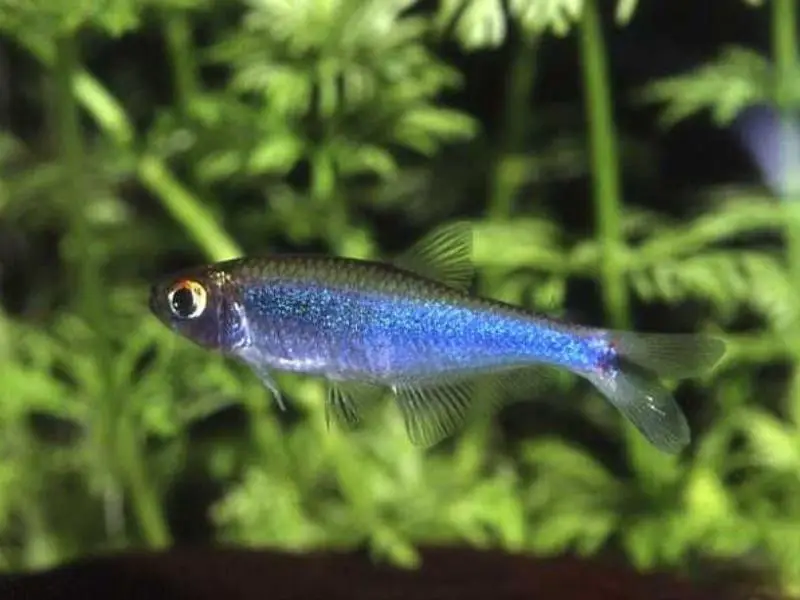
Blue tetras are attractive fish that carry a blue to a bluish-green color. Although small, these fish are active swimmers, so they do need more space to swim in compared to other fish of their size.
Colors, Patterns, Fins, and Sex Differences
In contrast to its often-confused twin, the Cochu’s blue tetra, the true blue tetra has few teeth in its upper jaw and is a vibrant combination of electric-blue against dark blue.
The blue tetra also has a longitudinal stripe that runs along the dorsal surface, extending to the middle fin, and down to the caudal area.
Depending on the refraction of surrounding light, the blue tetra can appear blue, bluish-green, or steely blue.
A bright light source like the sun enhances the blue tetra’s color and highlights its shiny scales and net-like patterning.
Good lighting might even help you detect the steel-blue band around the fish’s dorsum.
The blue tetra’s irises are shiny silver in color, with a slightly golden shade at the upper portion of the eye and a brownish-red shade at the bottom border.
The tips of the dorsal and caudal fins may sometimes appear white or bluish-white, while the other fins are all transparent.
Female blue tetras have round bellies, and males are straight and lean. During the spawning season, males develop an intense red color around their anal fin.
Typical Behavior
Blue tetras are schooling fish, meaning that they rather live in groups. Keep the blue tetra in a group of six or more fish.
Although generally quiet and peaceful, the blue tetra does have a slightly aggressive streak, especially towards other fish species and when there isn’t enough space in the tank to swim freely.
Blue tetras are active fish that love to swim all over the middle to upper water column. They go after the food as fast as they can as soon as it enters the tank, even racing other fish to the catch.
You probably won’t find blue tetras hiding out in the foliage.
Blue Tetra Care & Tank Requirements
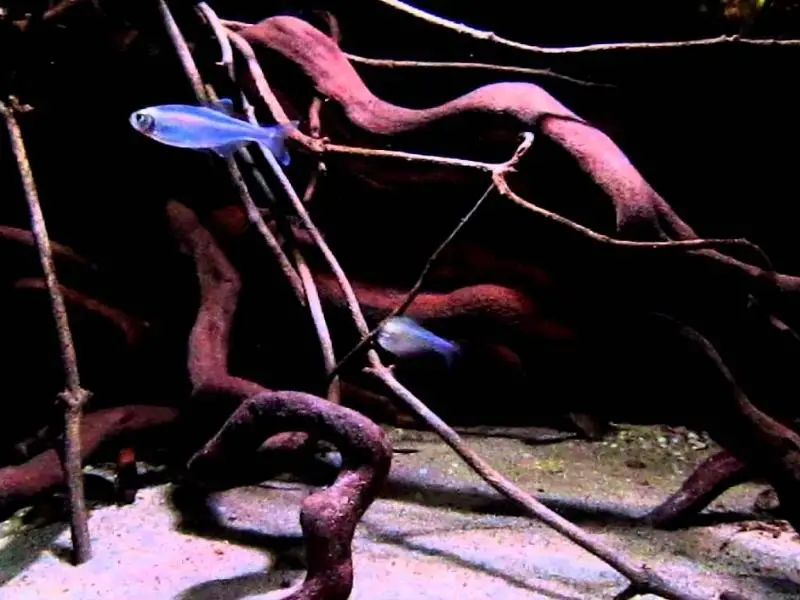
Blue tetras are easy to care for. They thrive best in big aquariums that are decorated with plenty of plants, and that have carefully-maintained water.
These fish are omnivores and aren’t picky at all.
Habitat and Tank Requirements
In their natural habitat, blue tetras are used to heavily-oxygenated, shady fresh waters offered by plenty of floating and substrate-rooted plants.
To simulate the blue tetra’s natural habitat, fill the fish’s tank with lots of aquatic plants.
Floating plants add shade to the tank, and substrate-rooted plants help to oxygenate the water. Add driftwood and other wood decorations like dried, twisted beech and oak branches.
Use dark-colored sand, caves, and overhangs. Dark colors make a good backdrop that helps bring out the blue tetra’s brilliant colors.
Tank Conditions
Provide just enough plants and decorations to shade and oxygenate the blue tetra’s aquarium water, but not so many as to overcrowd the fish.
Blue tetra’s need plenty of open space to swim, so the tank should be no less than 20 gallons.
Ideal tank conditions include the following parameters:
| Water type: | Soft water |
| Tank size: | Minimum 20 gallons |
| Water temperature: | 71.6–78.8ºF (22–26ºC) |
| Substrate: | Sand |
| Tank setup: | Hollow decorations, plants, rocks, caves |
| Acidity: | 5.5–7.0 pH |
| Water hardness: | 5–12 dGH |
| Filter: | Yes |
When keeping blue tetras, ensure that the aquarium water is the right temperature, that they have enough oxygen and the right food, and that the tank is kept clean.
Disease
Neon tetra disease is a rare disease caused by mycobacteria. The disease commonly affects stressed blue tetras that live in an overcrowded community tank.
Not all blue tetras that appear sickly will have neon tetra disease. Affected fish appear restless and lose their color. They may appear to have difficulty swimming and can form cyst-like growths.
Neon tetra disease is named after the neon tetra, from which it was first discovered.
There is no known cure for neon tetra disease, and it is highly contagious. The affecting mycobacterium thrives in warm-water tanks that have low pH, low dissolved oxygen, and an organically rich environment.
The best treatment for neon tetra disease is to immediately separate the affected fish to prevent other fish from getting infected as well.
Keep the affected fish’s tank water between 74 and 76 degrees Fahrenheit, use a sponge filter or air stone to increase water oxygenation, maintain the fish’s healthy diet, and separate territorial fish to maintain a peaceful environment.
In some cases, affected fish must be euthanized.
Keep all newly acquired fish in a separate tank or container for a few weeks to observe them for any health problems before adding them to a community tank.
Tank Mates
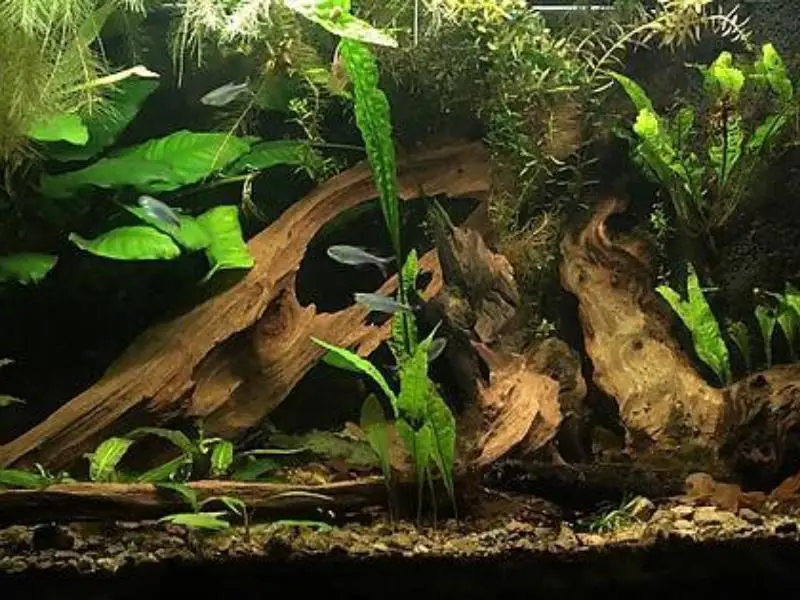
Blue tetras are generally peaceful fish, though they can be slightly aggressive to small fish and some other species when feeding.
Blue tetras are fin-nippers too, so don’t house them with fish that have long, thin fins.
Great tank mates for a blue tetra include:
- Other tetra fish like the neon tetra and Cochu’s blue tetra
- Armored catfish
- Barbs
- Dwarf cichlids
Diet and Feeding
Blue tetras are omnivores and will eat almost anything. Remember that blue tetras have small mouths, so you should feed them small or cut-up foods.
Feed blue tetras enough food that they can consume within five minutes. Feeding them more can lead to overeating, and that isn’t good for your fish.
Give blue tetras a wide variety of food to ensure proper nutrition. Dry food should make up the bulk of the blue tetra’s diet and can be in the form of wafers, pellets, granules, or flakes.
You can also feed them frozen or freeze-dried foods like brine shrimps, infusoria, or worms on occasion.
Breeding
- Establish a separate spawning tank for your blue tetras. The spawning tank should be at least 15 to 20 gallons with soft, acidic, aged water, which is water that has a low mineral content and that has been allowed to sit for at least 24 hours. This water should have a hardness set at 1.5 dGH and a pH of 5.5–6. Use a small air-powered sponge water filter to clean and oxygenate the water.
- Substrates are not needed for the spawning tank, although placing aquatic plants like Amazon swords or other broadleaf plants is recommended because they can serve as areas where the female fish can lay her eggs. Additionally, floating plants can help dim the tank, which is highly important to encourage breeding.
- Choose a female and male blue tetra that you want to mate. Female blue tetras can be quite choosy with their partners, so you will have to be patient to see if your pair is compatible. Sometimes determining compatibility could take weeks or months. A compatible breeding pair will not be aggressive to one another. Additionally, in order for a pair to be compatible, they also need to be from the same species.After confirming compatibility, keep the pair together in the community tank and feed them high-quality frozen and live foods until the female becomes round with eggs.
- Once the female is round with eggs, and the male is showing its best colors, you can transfer the pair to the spawning tank to begin the spawning process. Keep the tank dark in the evening to encourage spawning, and increase the light source the following day
- The next day the female should have spawned the eggs, likely among the plants, and the male fertilized them. The eggs are often hard to see because they measure only about 1/16 of an inch. Adult fish tend to eat their eggs, so immediately remove the parents from the tank once the spawning cycle is over.
- The eggs are viable if, when you shine a bright light on the eggs and look closely, you can see the eggs moving in small jumping-like vibrations. The eggs will hatch within approximately 24 hours
- Fry will feed on yolk sacs initially, but a day or so later, you will need to feed the fry paramecium or infusoria as their first food. It will take another 24–48 hours before the fry start swimming in the spawning tank. When they are large enough, you can transfer them to a community tank.
Should You Get a Blue Tetra for Your Aquarium?
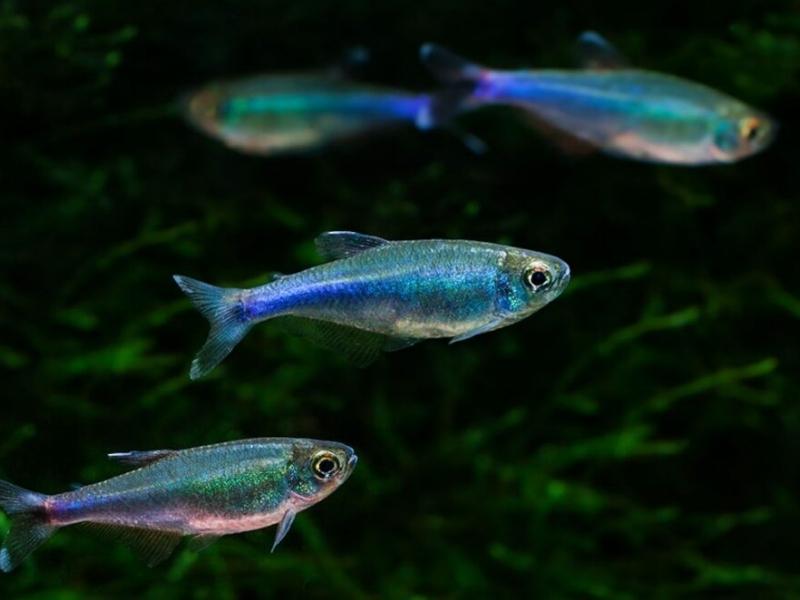
There is not much known about blue tetra since this is a relatively new species. Caring for blue tetra is easy, though breeding them should be left to advanced aquarists.
Blue tetras are a great first fish for beginner aquarium enthusiasts. This species’ appearance will surely add a touch of color to your home.

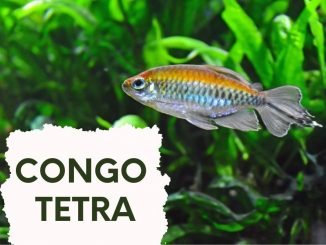
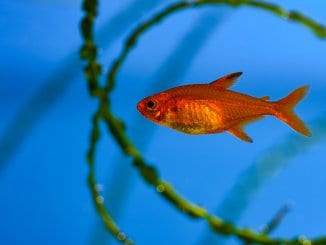
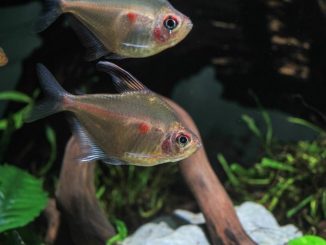
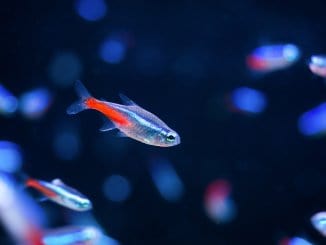
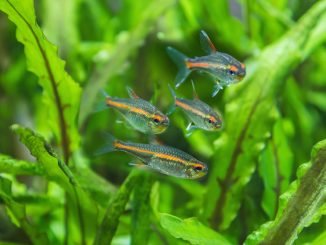
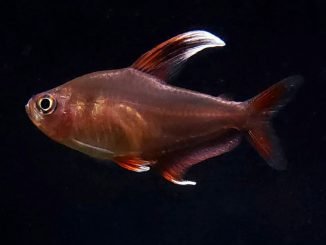
Be the first to comment